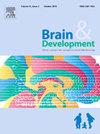MiR-497/PLD regulation contributes to cognitive dysfunction in neonatal rats after repeated sevoflurane exposure
IF 1.3
4区 医学
Q4 CLINICAL NEUROLOGY
引用次数: 0
Abstract
Background
Repeated sevoflurane exposure during early development can induce neurotoxic effects. MicroRNAs (miRNAs) are critical regulators of gene expression, playing essential roles in neural development and function, but their exact mechanisms remain unclear. This study investigates the role of the miR-497/Phospholipase D1(PLD1) axis, which is involved in neuronal differentiation and survival, in mediating the neurotoxic effects of repeated sevoflurane anesthesia.
Methods
Neonatal rats were treated with sevoflurane repeatedly. The expression levels of miR-497 in the rat hippocampi were assessed using qRT-PCR, and neuronal apoptosis was detected by TUNEL assay. PLD1 was predicted and confirmed as a target of miR-497. The regulatory relationship between PLD1 and miR-497 in primary neuronal cells was determined using luciferase reporter assays and Western blot. Immunohistochemistry was employed to examine PLD1 expression. A rescue experiment was performed to confirm the involvement of the miR-497/PLD1 pathway in sevoflurane-induced neurotoxicity. Cognitive performance was evaluated using Moris water maze.
Results
We identified the miR-497/PLD1 axis as the central mediator of sevoflurane-induced neurotoxicity. Repeated sevoflurane exposure triggered a striking upregulation of hippocampal miR-497, which directly targeted the 3′-UTR of PLD1 to suppress its expression. Functional validation demonstrated that miR-497 inhibition rescued neuronal injury and apoptosis, whereas silencing PLD1 abolished the neuroprotective effects of miR-497 suppression, establishing PLD1 as the indispensable downstream effector of miR-497.
Conclusions
Our study provides the first evidence that dysregulation of the miR-497/PLD1 axis drives sevoflurane-related newborn cognitive deficits. This mechanistic insight advances our understanding of anesthetic neurotoxicity, while targeting this newly identified axis may represent a novel therapeutic strategy to counteract anesthesia-associated neurodevelopmental risks.
MiR-497/PLD调控有助于七氟醚反复暴露后新生大鼠的认知功能障碍
背景:在发育早期反复接触七氟醚可诱发神经毒性作用。MicroRNAs (miRNAs)是基因表达的关键调控因子,在神经发育和功能中起着重要作用,但其确切机制尚不清楚。本研究探讨了参与神经元分化和存活的miR-497/磷脂酶D1(PLD1)轴在介导七氟醚麻醉的神经毒性作用中的作用。方法用七氟醚反复给药。采用qRT-PCR检测miR-497在大鼠海马中的表达水平,TUNEL法检测神经元凋亡。预测并证实PLD1是miR-497的靶标。利用荧光素酶报告基因检测和Western blot检测原代神经元细胞中PLD1和miR-497的调控关系。免疫组化检测PLD1表达。我们进行了一项救援实验来证实miR-497/PLD1通路参与七氟醚诱导的神经毒性。采用Moris水迷宫评估认知能力。结果我们发现miR-497/PLD1轴是七氟醚诱导的神经毒性的中枢介质。重复七氟醚暴露引发海马miR-497显著上调,直接靶向PLD1的3′-UTR抑制其表达。功能验证表明,miR-497抑制挽救了神经元损伤和凋亡,而沉默PLD1则消除了miR-497抑制的神经保护作用,从而确立了PLD1是miR-497不可缺少的下游效应物。我们的研究首次提供了miR-497/PLD1轴失调驱动七氟醚相关新生儿认知缺陷的证据。这种机制的洞察力推进了我们对麻醉神经毒性的理解,而针对这个新发现的轴可能代表一种新的治疗策略,以抵消麻醉相关的神经发育风险。
本文章由计算机程序翻译,如有差异,请以英文原文为准。
求助全文
约1分钟内获得全文
求助全文
来源期刊

Brain & Development
医学-临床神经学
CiteScore
3.60
自引率
0.00%
发文量
153
审稿时长
50 days
期刊介绍:
Brain and Development (ISSN 0387-7604) is the Official Journal of the Japanese Society of Child Neurology, and is aimed to promote clinical child neurology and developmental neuroscience.
The journal is devoted to publishing Review Articles, Full Length Original Papers, Case Reports and Letters to the Editor in the field of Child Neurology and related sciences. Proceedings of meetings, and professional announcements will be published at the Editor''s discretion. Letters concerning articles published in Brain and Development and other relevant issues are also welcome.
 求助内容:
求助内容: 应助结果提醒方式:
应助结果提醒方式:


